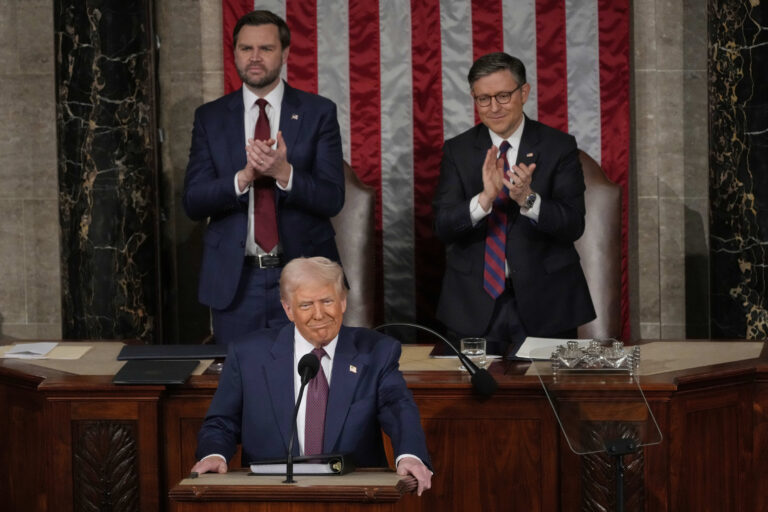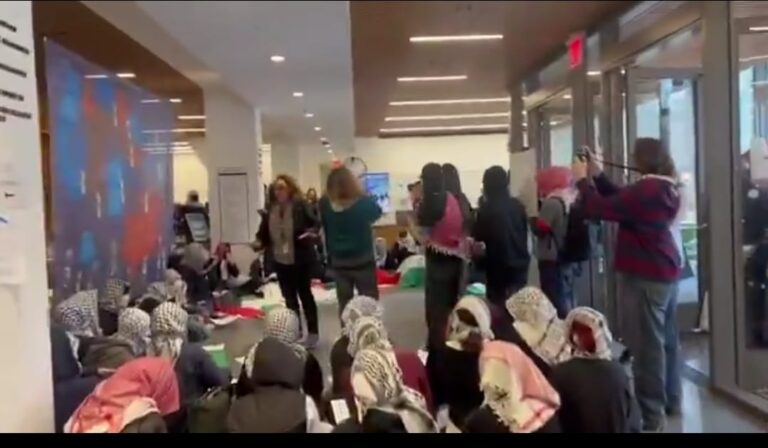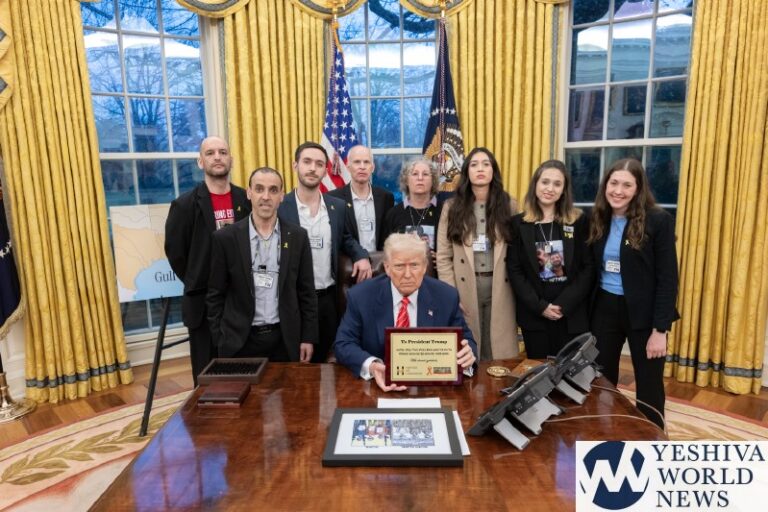 The following are Mayor Michael R. Bloomberg’s remarks as delivered this afternoon at Economic Club of New York Luncheon at the Marriott Marquis
The following are Mayor Michael R. Bloomberg’s remarks as delivered this afternoon at Economic Club of New York Luncheon at the Marriott Marquis
“Roger thank you, and good afternoon everyone. That was a very kind introduction. But let me start by thanking of all of you for everything that you have done for the city over the past 12 years.
“Many of you are involved in the nonprofit world. Many of you have supported the public-private partnerships we’ve formed over the past 12 years, which have raised $2.8 billion privately to support our schools, our parks, our environment, and everything else that we value in our neighborhoods. And if it hadn’t been for your generosity we could not help those who are really in need.
“New York, I’m happy to say, is a city that is full of people with big hearts – and people who are willing to give their time and their talents and their money to keep our city strong. As mayor, I’ve gotten to see just how true that is – and I can’t tell you how inspiring it has been, and how grateful I am to have had the opportunity to serve the people of New York City.
“I will look back on this for the rest of my life and have been able to do something, hopefully, for my kids and about to have a grandchild. And that’s what this is all about, it’s helping others and leaving a better life for those that come after us.
“There really is no city that is quite like New York. There are plenty of other great cities in the world, but the diversity that New York embodies is truly exceptional.
“We are a city where all people, of all backgrounds, speaking all languages, practicing all religions, holding all beliefs, live and work side-by-side.
“What matters here is not where you came from, but where you are going. In Washington, they ask you what party you’re in. In Philadelphia, they ask you who your parents are. In Boston, they ask you what neighborhood you grew up in.
“Well we don’t care much about those things, we’re interested only in what you’re doing with your life and what your dreams are. That’s a big reason why people continue to come here from across the country and around the world.
“In fact, our population in New York City now is at an all-time high, and for the first time since before 1950, more people are moving into New York City than are moving out of it.
“Roger mentioned some of the statistics about how far we’ve come over the past 12 years, so I won’t bore you by repeating them. But what it does add up to is New York City has never been stronger than it is today, and I think it’s fair to say our future has never been brighter.
“When I think back to when I moved here in 1966, what was happening, New York was beginning to decay. Back then, the middle class dream was to escape the city – with its filth and crime – and move to the suburbs.
“In the 1970s, New York City lost more than 10 percent of its population – and it was far from alone. Cities across the country were hemorrhaging jobs and population.
“The question back then wasn’t whether cities could be saved; the question was whether they were even worth saving. And many people back then thought that they were not.
“It was the golden age of the suburb – and it defined the second half of the 20th century in the United States. But I think it’s safe to say that it’s clear that the golden age of the suburb is over, and it is being replaced by a new urban renaissance that is redefining the future.
“Today, for the first time in history, the majority of people on Earth live in cities. By the mid-century, three-fourths of the world’s population are expected to be city dwellers.
“Here in the United States., metropolitan regions now account for 84 percent of our population, and 91 percent of our GDP. Cities are – once again – ascendant. They are the engines of innovation that are driving progress in the 21st century.
“States were once known as the laboratories of democracy, where new policy experiments shaped the future of the nation. Today, cities have eclipsed the states as policy pioneers on every major issue: reforming public education, battling climate change, spurring economic development, improving public health, fighting poverty, reducing crime, protecting consumers, expanding mass transit, and promoting arts and culture.
“Over the past 12 years, I’ve had the opportunity to meet with hundreds of mayors – and to work with them on these and other issues. Most of us are not interested in partisan politics. We don’t care whether an idea is liberal or conservative. We want to know: Can it work?
“Running a city is an exercise in pragmatic problem-solving, not ideological politics. And that gives mayors a common, unifying bond – a bond that I’ve worked to strengthen.
“Whether it was illegal guns, or immigration, or climate change, or infrastructure, or financial empowerment or any other issue, we’ve cultivated a community of mayors across the country who are committed to taking bold and innovative actions.
“We’ve done that by building coalitions that foster local change and that also give us a strong voice in Washington. And we’ve also done it through philanthropy.
“My foundation created a competition called the Mayors Challenge that encourages cities to propose innovative new ideas that can be shared with other cities, and the winners receive funding to help them implement those.
“Some ideas will succeed. Some won’t. There is no experimentation without failure – and there is no innovation without experimentation.
“Today, the spirit of cooperation among mayors has never been stronger. And the ambition of mayors has never been greater. Mayors are thinking globally – and acting locally. If you want to change the world, run for mayor.
“And I think it’s fair to say that – in this century – no city has had greater impact on the country, and on the world, than New York City.
“The progress we’ve made over the past 12 years, thanks to the work of so many dedicated people, has been incredible – but it has not been inevitable. Success can never be taken for granted, especially in a global economy where competition is ferocious.
“As soon as you begin to take success for granted, you begin to fail. That’s what happened to New York back in the 60s and 70s. Our elected leaders thought that New York would always be a place where people want to come – even if it was unsafe and unclean, dysfunctional and dystopian.
“Well, they were wrong. Tragically wrong. That was a hard lesson to learn – a lesson that cost us dearly, and a lesson that we must never forget.
“I think the heart of that lesson can be summed up in six words: Tomorrow is more important than today.
“Or to put it another way: Our children’s future should never be sacrificed for our own benefit. That’s a simple idea – but in politics, it’s an awfully tough sell. People want benefits from their government – and they want them now.
“That’s natural – and it’s the government’s job to deliver them, and to find innovative new ways to tackle the toughest problems and improve life for people today. But at the same time, it’s also government’s job to improve life for people tomorrow – including for the children who are too young to vote and the children who have yet to be born.
“Those of us in government work for them, too – and it’s our job to think about their needs 20, 30, 40 and even 100 years from now. That involves looking ahead, identifying barriers to progress, and taking action.
“For instance, when I was elected back in ‘01, major parts of the city were frozen in the1960s. The 1961 zoning map our city fathers had adopted remained largely in place, even though it reserved large swaths of the city – much of it along our waterfront – for industrial and manufacturing use.
“The map was based on the assumption that the city would always be a large-scale industrial powerhouse. That mistake was left to stand, for 40 years.
“In 2001, the city was still freezing out private investment, and still refusing to make public infrastructure investments that would attract it.
“Hudson Yards on the Far West Side of Manhattan is a perfect example. Until we rezoned it back in 2005, it was a warehouse district, zoned largely for industrial use, with limited access to mass transit.
“The same could be said of the entire East River waterfront in Brooklyn and Queens. Willets Point in Queens, a former garbage dump, had been left to fester for nearly a century.
“Downtown Brooklyn had also been hemmed by antiquated zoning restrictions, as had Jamaica in Queens, and parts of Harlem.
“In all of those areas and others we looked ahead – not just a few years, but a few decades. And we not only changed the zoning based on the future of our economy, we invested in the infrastructure that will stimulate private sector investment for decades.
“That includes everything from sewers and water mains to new transportation options, including the East River Ferry, the Five Borough Taxi, Citi Bike, and the first City-funded extension of the subway to be built in 50 years.
“That extension – of the Number 7 Train from Times Square to 11th Avenue, and south to 34th Street – is almost complete, and it has already led to billions of dollars in new investment on the Far West Side.
“The common denominator in all of these actions is a commitment to investing in the future. When city governments fail to look ahead, cities fail.
“That’s why we also created an Applied Sciences competition. We sat down with hundreds of leaders in business, science, medicine, tech, media, and other industries, and we asked them: ‘Where is your industry going? And what are your greatest needs?’
“The answer we heard over and over again was: ‘We need access to more computer engineers and applied scientists. The city just does not have enough of them.’ It was true – and we knew that if nothing was done, the problem would get worse.
“So we launched a massive applied science competition, which has resulted in massive new investments by world-class universities – and it’s going to double the number of engineering students and faculty in our city in the years to come.
“As an old engineering major who somehow lost his way and got into business, and then – God help us – politics, I couldn’t be happier about it. But the guy who deserves the lion’s share of the credit is here with us today, Deputy Mayor Bob Steel – and I think he deserves a great hand.
“Government’s job is to look ahead, and find innovative, pragmatic ways to remove barriers to future growth, before they become crises – and that’s what we’ve done across the city. But there is one barrier to growth that has been particularly difficult to scale – and it is especially dangerous to ignore.
“It’s a barrier that has come up again and again in my conversations with mayors around the country. And it’s a barrier that has already bankrupted a number of cities. I’m talking, of course, about the explosion in the cost of pension and health care benefits for municipal workers.
“As optimistic as I am about the capacity of cities to look ahead and change the world for the better – and you’ll find no stronger believer in that idea than me – we cannot blind ourselves to the obstacles that stand in the way.
“And right now, our country appears to be in the early stages of a growing fiscal crisis that – if nothing is done – will extract a terrible toll on the next generation. Here in New York City, over the past 12 years our pension costs have gone from $1.5 billion to $8.2 billion. That’s almost a 500 percent increase – when inflation totaled only 35 percent.
“The seven billion dollars additional that taxpayers are forced to spend on pensions every year is seven billion dollars more that cannot be invested in our schools and our parks and our social safety net, or our mass transit system, or our climate resiliency work, or our affordable housing efforts, or our tax-relief for working families.
“Think about it this way: During our Administration’s time in office, we’ve spent $68 billion in taxpayer money on pensions, compared to $5.3 billion on affordable housing. So taxpayers spent about 13 dollars on pensions for every one dollar that they invest in affordable housing.
“And keep in mind: We have the largest affordable housing program that any American city has ever created. 165,000 units, which is enough to house the entire city of Atlanta, and then some.
“But imagine the number of housing units we could have created if our pension costs had not crowded out that extra investment. Or imagine the number of new schools we could have built. Or the raises we could have given to our workers, or the additional services we could have extended, or the property tax cuts we could have given to homeowners.
“Unless something is done, that seven billion dollars additional will continue to grow, and continue to harm our ability to invest in the future. And, it will be compounded by the growth in health care costs, which have also continued to skyrocket.
“Virtually every government in the country requires employees to contribute to their health care premiums – but here in New York City, about 90 percent of our employees and retirees contribute virtually nothing. Taxpayers here in New York City pick up the entire tab.
“For many years, we have tried to convince public sector labor leaders to modernize our pension and health care systems to bring down costs, and I will say we have had very little success.
“In fact, the labor leaders have sued the City to stop us from putting out just a solicitation to redesign health benefits, which would dramatically reduce costs and improve care for our employees and their families.
“The good news, however, is that our current health care provider was so concerned about our efforts about the prospect of competition that for the first time since anyone can remember they did not raise our rates this year, saving taxpayers hundreds of millions of dollars. It was one of the unexpected things that helped us balance the City’s budget for the coming year.
“We have also had some success in Albany. Back in 2009, Governor Paterson vetoed a pension extender that had allowed many uniformed workers to retire earlier and with more generous benefits. And we supported Governor’s Cuomo push to create a new tier for new employees, which will produce some savings. But that only slows future growth.
“Keep in mind: Pensions and health care costs have become a major percentage of the overall compensation we provide to our workforce. In fact, the pension and health care benefits we pay for uniformed workers amount to more than 100 percent of their salaries, and they are a very large percentage of salaries for our overall workforce.
“In signing contracts, we have to decide what is fair compensation, and I’ve always thought there are three basic standards. It is not what the unions want, the workers want – we all want to get paid more, that’s natural. It’s not what the taxpayers are willing to do – we all want to pay less. But we have to find a rational basis to decide what’s an appropriate level to pay our workforce in benefits and in salary.
“First, we have to make sure we can get the talented people we need to perform critical services – and I don’t think anyone would argue that we haven’t been able to do that.
“Second, we have to be able to retain the people we hire, because we invest in training them. I’m glad to say our retention rate is very high, which, given the economy, is probably not going to change.
“And if you remember, when I first came into office we were losing teachers by the bucketful to Nassau County, Westchester County – all of that has stopped. We don’t lose very many people.
“And third, we have to be able to recruit new applicants – and we are doing that. Whenever we open a hiring list for any position working for the City it is way over-subscribed because our salaries and benefits are attractive.
“Make no mistake about it: New York City has the best workforce in the world, and for that to continue our employees must be competitively compensated. But right now, we offer benefits that are over and above what the market offers, and what other governments offer. And those costs continue to grow, and as they do it limits our ability to increase base salaries.
“For example: The private market has basically stopped offering defined benefit pensions – and yet in New York City, labor leaders have opposed any effort to give their members even the choice of a defined contribution plan.
“Employees who work for the City University of New York have that choice – and incidentally three-quarters of them choose the defined-contribution plan because it is more flexible and portable. Why shouldn’t New York City employees have the same choice?
“It’s the kind of questions that more and more mayors and governors – in both political parties – are asking across the country, which is the first real sign of a crack in the labor-electoral complex that has traditionally stymied reform. And they are asking that out of sheer necessity.
“Since 2010, 38 local governments have filed for bankruptcy, largely because of out-of-control pension costs. And more are now flirting with it. But even if struggling cities escape bankruptcy, the funds that must be diverted to cover skyrocketing pension bills are funds that cannot be invested in the future, which can set off a downward spiral that, as New York found out in the ‘70s, is deeply painful and takes decades to recover from.
“As a country, we must confront this crisis before that happens. It is one of the biggest threats facing cities – because it is forcing government into a fiscal straight jacket that severely limits its ability to provide an effective social safety net and to invest in the next generation.
“The costs of today’s benefits cannot be sustained for another generation – not without inflicting real harm on our citizens, on our children and our grandchildren.
“Now, labor leaders are understandably determined to protect their members. That’s their job, and we understand that. They’ve done it exceptionally well. But it’s also the job of those in government and the public at large to protect our children, to protect the social safety net, and to protect future generations.
“That’s a fundamental principle of progressive politics, and we cannot afford to adhere to that principle on every issue except labor contracts. I think it’s no secret that elected officials have a tendency to make decisions based on short-term political rewards, rather than long-term economic gains.
“And let’s face it: The future that most elected officials worry most about is their own. Winning election – or reelection – is the goal around which everything else revolves. But we cannot afford for our elected officials to put their own futures ahead of the next generation’s, and to continue perpetuating a labor-electoral complex that is undermining our collective future.
“We need them to look ahead and to address the needs of tomorrow instead of being prisoners to the labor contracts of yesterday.
“Simply put: our pension and health care systems must be modernized to be sustained. And so in the years ahead, I will stand with mayors and others who stand up for the next generation by tackling this issue.
“Three years ago, in my State of the City speech, I said: ‘I will make this commitment: I will not sign a contract with salary increases unless they are accompanied by reforms in benefit packages that produce the savings we need to continue making investments in our future and protecting vital services.’
“I have kept my commitment. And while labor leaders refused that deal, they cannot hold out forever – and they cannot afford to wait out another mayor. It would be at least four years.
“If the City holds strong to its position in the future, labor leaders will come to the table. They are anxious for a new contract, I understand that, and that puts the next Administration in a powerful position of strength to negotiate historic reforms.
“Now, there is a notion that we are leaving the next Administration with a hole in the budget because our labor unions have refused to sign new contracts. In fact, just the opposite is true: We are leaving behind money to pay for the same type of contract Governor Cuomo signed with labor unions in 2011, and which our unions have refused to sign.
“And we are also leaving behind something more important, and that is political leverage. The next Administration will have a once-in-a-generation opportunity for comprehensive benefit reform, which is essential to our long-term future.
“In 13 days, I will walk out of office knowing that – whether you agreed or disagreed with me – I always made decisions based on the merits, and we always put the needs of future generations ahead of the demands of today’s special interest groups.
“That’s a big reason why our city has made so much progress over the past 12 years. And it is why we have been able lead the urban renaissance that is now underway around the globe.
“If we are going to continue leading it, we must be a city that continues to invest in the future, and continues to knock down the barriers that stand in the way of those investments. I’m optimistic about our future – because the city has never been stronger, and we are leaving the next administration a very strong hand to play: low crime, balanced budget, infinitely better schools, enormous amount of affordable housing. That is a safety net that is the best in the country and perhaps the best in the world.
“I’m hopeful that the next Administration will succeed – I plan to live here for the rest of my life. And I really do believe that the best days are still ahead for our city, but that requires all of us – government and the people outside of government – to understand the basic truths: there are no free lunches, we cannot continue to pay more than we need to, we have to make the big investments in infrastructure and in our labor force that will give us a future.
“Thank you very much, and God bless. Happy holidays.”
(YWN Desk – NYC)










